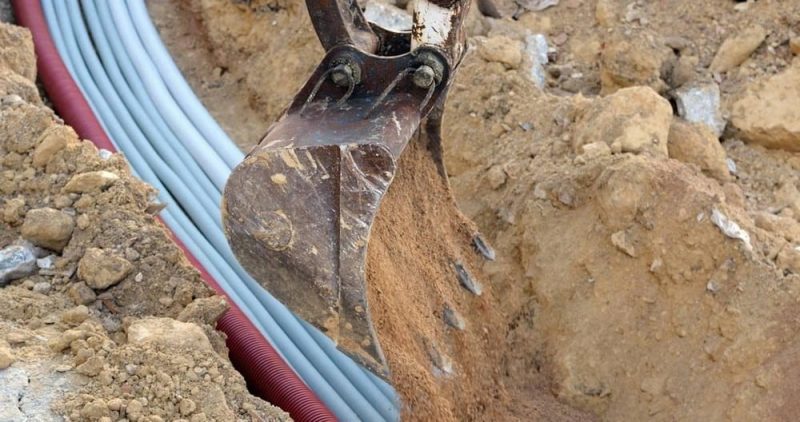
The numbers are staggering. Nearly 700,000 underground utility lines are damaged during excavation work each year. These incidents carry serious consequences. One in five people injured by utility strikes does not survive, and the financial impact can be just as severe.
Utility companies may impose steep fines, sometimes charging up to $10,000 per hour for service disruptions. Even more alarming is the fact that around 7 percent of these accidents happen because of incorrect markings.
For homeowners, safe digging practices are essential. Whether you are planting a tree, installing a fence, or building a deck, knowing what lies beneath your property helps prevent dangerous and expensive accidents.
This guide will walk you through everything you need to know about underground safety. You will learn how to recognize different types of utility lines, how to use the 811 system properly, and what to do if a line is accidentally struck.
Know What Lies Beneath
Our daily lives run on a hidden network of infrastructure that lies beneath our feet. You need to know what’s underground before you can dig safely.
Common underground utility types
Your property sits above a complex network of pipes, cables, and lines that deliver essential services. Finding these hidden systems makes excavation safer.
The most common underground utilities include:
- Water and sewer systems – Including water mains, service lines, sewer mains, and stormwater drains that manage fresh water delivery and wastewater removal
- Natural gas lines – Made of durable materials like steel or plastic that deliver gas for heating, cooking, and power generation
- Electrical distribution systems – Underground cables in protective conduits that bring power to homes and businesses
- Telecommunications – Fiber optic cables, telephone lines, and internet cables that provide connectivity
- Stormwater management systems – Underground drains and pipes that prevent flooding and erosion
These systems work together to deliver resources and keep our communities running smoothly.
Why utility strikes are dangerous
Hitting underground utilities creates problems way beyond just being inconvenient. The U.S. sees between 400,000 and 800,000 utility strikes each year, and each one can be catastrophic.
The human cost is staggering. More than 400 people have died from utility strikes in the past 20 years, and over 2,000 have been injured. A damaged gas pipeline can leak natural gas that might explode or cause people to suffocate. Electric lines can electrocute workers when hit.
The financial damage hits hard, too. A typical utility strike costs $4,000 just to repair. The real price tag is nowhere near that small—studies show indirect and social costs run 29 times higher than direct repairs.
These accidents cut off essential services to entire neighborhoods. A broken water pipe floods streets while cut cables leave thousands without phone or internet. Emergency services and hospitals feel these disruptions, especially when they lose power or communication.
The good news? All but one of these accidents could be prevented if people took the right precautions. That’s why everyone needs to understand underground safety before starting any digging project.
Plan Before You Dig

Safe digging practices start with proper planning. A well-prepared project helps prevent damage that can get pricey and keeps underground utilities safe.
How to use the 811 system
The 811 service links homeowners and contractors to utility companies that mark underground facilities before digging starts. You should contact 811 at least three business days before your project. Your call should include:
- Your precise street address
- Type of work you’re planning
- Specific area description where digging will occur
- Date and time when excavation will begin
The system will give you a ticket number after submitting your request. Professional locators from utility companies will then mark their underground facilities with colored flags or paint. The 811 service comes at no cost, and the law requires you to use it.
Marking your dig site properly
White markings known as “white lining” should outline your intended dig area before you contact 811. Locators can better understand your project’s scope through this practice, which helps avoid unnecessary utility markings.
A single white stake at the center works well for smaller projects within a 50-foot radius. Make sure to include your company’s identifier and the excavation radius. Linear projects need white arrows showing direction along the centerline, spaced roughly 4 to 50 feet apart.
For extra accuracy on complicated sites, many property owners simply search for “underground utility locating services near me” to quickly find local experts who can mark all buried utilities before digging.
Using ground-penetrating radar and other tools
Ground-penetrating radar (GPR) technology uses radio waves that bounce back when they hit buried objects. This advanced tool:
- Detects both metallic and non-metallic pipes
- Creates subsurface images without digging
- Provides depth information for utility lines
- Works where traditional locating methods fail
Electromagnetic pipe locators work alongside GPR by sending electrical signals to underground utilities. Complex sites benefit from acoustic leak detection and 3D utility mapping that add more precision.
Take photos or video to document the markings before you start digging. A solid plan will keep underground utilities safe throughout your project.
Follow Safe Digging Techniques

The actual digging process just needs careful attention to specific techniques that protect you and the underground infrastructure.
Understanding the tolerance zone
A safety buffer around marked utilities creates the tolerance zone where special caution is required. The zone typically extends 18-24 inches on either side of the marked line. North Carolina’s zone reaches 30 inches. Mechanical excavation cannot occur within this area. The buffer exists because utility locating isn’t an exact science, and soil conditions can distort electromagnetic fields.
Hand digging and potholing best practices
You should use only hand tools with rounded or blunt edges within the tolerance zone. Pointed tools like picks, mattocks, or pry bars might puncture lines and should never be used. The safest approach is to dig beside the marked area—not directly over it. The soil should be removed carefully instead of forceful prying.
Creating small test holes to visually identify utilities—known as potholing—will give a precise location verification. This technique helps expose underground lines before machinery use.
How to identify utility markers and signs
The American Public Works Association’s (APWA) color code system guides utility locators:
- Red: Electric power lines
- Yellow: Gas, oil, petroleum
- Blue: Potable water
- Green: Sewer/drainage
- Orange: Communication/cable
- Purple: Reclaimed water/irrigation
- Pink: Temporary survey marks
- White: Proposed excavation
You should read these markings from left to right in a clockwise direction.
What to do if you find an unmarked line
Stop excavation immediately when you find an unmarked utility. The utility owner should be notified, and 811 should be called. Damaged lines should never be repaired or hidden. Everyone should evacuate the location, and 911 should be called if the utility poses an immediate danger.
Prepare for the Unexpected
Accidents can happen during excavation projects despite careful planning and proper techniques. Everything in underground safety involves preparing for unexpected situations.
Creating an emergency action plan
A written emergency action plan is vital before any digging project begins. Your plan should include designated emergency managers, evacuation procedures, and specific steps for different scenarios. Start by thinking through possible “what if” situations—like hitting a gas line or finding an unmarked utility. The plan must list emergency contact numbers, each person’s responsibilities, and ways to account for everyone after evacuation.
What to do if a line is hit
These immediate steps are necessary when you strike an underground utility:
- Stop all work and remain calm
- Evacuate the area if necessary, especially with gas leaks
- Call 911 if the situation threatens public safety
- Notify the utility company promptly
- Secure the worksite from public access
Watch for warning signs like hissing sounds or unusual odors. You should never try to repair damaged lines or operate pipeline equipment yourself. Document the whole ordeal with photos for insurance and legal purposes. Note that the law requires you to report utility damage, no matter how minor it might seem.
Conclusion
Every successful digging project begins with one essential step: knowledge. Understanding what lies beneath the surface of your property is not just about convenience. It is about safety, responsibility, and preventing costly mistakes.
By following safe digging practices, using the 811 system, and relying on the right tools and techniques, you can significantly lower the risk of injury, service interruptions, and financial damage. More importantly, you are helping to protect the vital infrastructure that supports your home and your community.
No matter the size of your project, the message remains the same. Plan thoroughly, dig carefully, and treat what is underground with the same respect as what is above. With the right preparation, you can complete your project with confidence and peace of mind.








